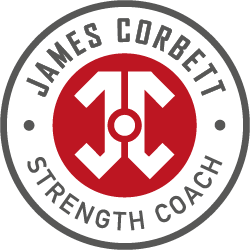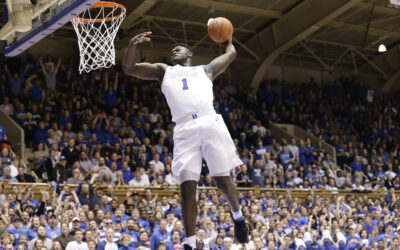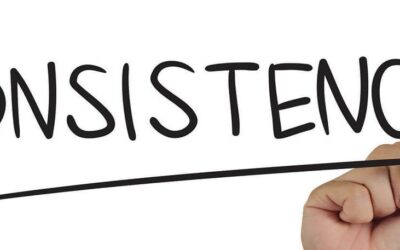And how to fix them
- Hours of cardio every week
- Restricting your calories too much
- Not taking rest days
- Not lifting heavy weights
- Not doing upper or lower body lifts
- Changing your workout every week
- Going too hard, too soon
- Not purchasing the correct personal gym equipment.
1 – Hours of cardio every week
Cardio-vascular exercise is important, especially important.
Having a robust and healthy heart and lungs will help keep you healthy as a whole and reduce the risk of many diseases.
But going back to, or just starting, the gym it is extremely easy to get yourself caught in the trap of the “cardio” machines.
If you join a gym, you might even get and “Induction.” This will involve an instructor showing you around the gym floor and how to operate the cardio machines.
That is not the instructor’s fault. After all that is what the instructor is being paid to do, and they might not know any better.
So next time you go in by yourself you do not really know what you are doing, so you stick with what you know. You get sweaty on the treadmill for 30 minutes, do a few sets of the resistance machines and stop for the day.
Honestly, that is a fantastic start.
You are doing something, that is better than nothing. And you will see positive results. Certainly, for a number of weeks.
But after four to six weeks the scale is going to stop going down, the inches are not going to be changing around your waist, chest, arms, leg, or hips.
All this time you try to work harder and sweat more for little to no results. In fact, you may even be sliding backwards.
What can you do about it?
Cardio does not have to done in the gym.
A thirty-minute walk is cardio. You can do that anytime. Before work, after work, on your lunch break, on a Sunday morning with friends.
Start with two thirty-minute walks per week. Once those become routine, you can gradually increase it to four or five times per week, but that is only if you want to.
While in the gym concentrate on getting stronger. Use compound lifts, add a little bit of weight each time you come in and allow your body to adapt to the stimulus you are supplying it with.
Compound lifts are movements that involve multiple joints and express human movement in an incrementally loadable fashion. There is more on this later in the article.
2- Restricting your calories too much
If your goal is to lose weight, then you must be in an energy deficit. This means you are using more calories (through activity, basic human functions, and workouts) than you are consuming in your food and drink.
The mistake that most people make is that they try and restrict their calories too much and do too much activity. This creates a large deficit. On the face of it this might seem like a clever idea as you will be able to lose the weight quicker and get “off the diet” as soon as possible.
This process is unsustainable. You might be able to keep up a large deficit for a few weeks at most.
But your body does not want to lose weight, it wants to keep things the same. So, processes that are out of your control begin to take place.
Hunger hormones and produced, giving you cravings for calorie dense foods. These are generally high in fat and sugar, and low in protein and micronutrients. A truly awful combination if you are trying to lose weight.
You will automatically begin to move less throughout the day and your energy levels to commit to resistance training will diminish.
This is a perfect storm that will lead to “yo-yo” dieting, the constant fluctuation in weight that will leave you feeling frustrated and angry that you cannot get long term, sustainable results.
What can I do about it?
Firstly, you might not have as much weight to lose as you think. For example, overweight and weak looks quite different from strong and in shape, but the weight on the scale might only differ slightly.
You can also find out a rough starting point for calories by using this calculator BMR Calculator
Start tracking different things, not just your weight.
Just tracking your bodyweight would be like tracking one stock price on the FTSE index and basing your decision to invest in five or six companies based solely on that one number, while everything else is going badly.
It might not be, but you have no idea of knowing.
Here are things to keep track of ALONG with your bodyweight.
- Your strength in your lifts.
If you are getting stronger, that is great indication things are going well. Especially as a beginner.
- Your waist, chest, hips, and thighs.
Seeing these values go down is another great indication you are losing body fat, even when your weight is staying stable. Muscle is denser than fat, so it takes up less space. Two people who weigh 100kg could have quite different measurements depending on their body composition. In fact, I can guarantee you would never guess they were the same weight.
- Your sleep
If your sleep quality and duration is improving, you are in a good place. This means your body is repairing and recovering well during the night.
If you are struggling to sleep well at night you are going to have to focus on that as it is going to hold you back at some point.
- Your appetite
If you are hungry, particularly in the morning, this is a great sign. You have been repairing and rebuilding during the night and your body has been using the food eaten the previous day to do so.
Feed your body with wholesome, nutritious foods. Plenty of protein and a good mix of carbs and fats and you will set yourself up for a good day and a good training session too!
Keep a food diary, can be a visual food diary or a written one. But there needs to be some sort of record. So that you can reflect on the changes you have made and assess their effectiveness.
- Your motivation
Your levels of motivation are a great indicator that your goals are in line with the overall narrative of your life. Your motivation levels can tell you if you are on the “right path.”
They are also a great indicator of your sleep and nutrition status. If you are eating and sleeping adequately then you will usually be more motivated and energetic is pursuing all your goals, not just your fitness ones.
If you are completely unmotivated something is “out of alignment.” You may need a more challenging goal; your current goal may be too challenging.
Start out by picking three and track them for 4-6 weeks. It does not have to be overly complicated, with your body measurements you will be able to see a numerical value, for others you may need to keep a diary or note book to track how they are doing. This is where “wearable tech” can be very useful for keeping track of sleep and step count, if those are the metrics you choose to keep track of.
3 – Not taking rest days
You should aim to do something physical every day.
It should be low intensity (you should be working hard enough that you should just be able to just hold a conversation or sing to yourself) and minimal impact on your joints.
Walking is excellent for this and does not require you to have a gym membership, just walk for 10-15 minutes one way and then walk home. Or find a loop that takes you 20-30 minutes to complete.
You can also use a rowing machine, an elliptical, a push bike, stationary bike or push/drag a sled. These are all great options but require access to appropriate equipment.
The key is to start off conservatively and build up from there. Until you are managing four or five 30-minute sessions per week. And do not stress out about it if you miss a couple. Just try to stay consistent when you can.
So, three to four times a week you should be exercising. The other days you should be TRAINING.
Lifting weights does not make you stronger, the recovery between the lifting sessions is what will make you stronger.
When we lift weights, we are sending a signal to the body to ADAPT, we must provide the body with enough RECOVERY resources to make the STRESS from lifting weights as useful as possible.
This is known as the Stress-Recovery-Adaptation cycle, or SRA cycle.
The recovery part is key.
- You must take enough time between your sessions. 48 hours is a good start.
- You must eat enough calories and protein between your sessions.
- You must sleep at least 8 hours a night, or as close that as you can get.
Allow your body the time, resources, and space it needs to adapt.
Do three FULL BODY sessions per week. This will change if you manage to get strong enough that your program needs to become more complex, but do not rush to complex when simple will get you there.
4 – Not lifting heavy weights.
Heavy weights make you stronger.
Lights weights do not make you stronger.
Strong things are useful and robust.
Weak things break easily.
Be a strong thing, not a weak thing.
The weights that other people are lifting is of no concern to you. Unless you are encouraging them to hit a goal, they have set for themselves.
But do not compare you to them. Compare you to who you were last week. Are you stronger than you were last week?
Heavy weights will feel heavy, that is not an excuse not to lift them.
Try this the next time your deadlifts are feeling heavy.
The 5-second rule – if you give everything to a deadlift rep for five full seconds, and it does not break off the floor, you can put it back down.
Stay in position, push the earth away and give it everything for that full 5 seconds. I have yet to see this strategy fail with any of my clients. The weight does not move right away as you begin to exert force on the barbell. You must sustain the effort for at least a few seconds and the weight will break off the floor.
For general strength training most of your lifting should be between 70% and 85% or your maximum capacity. The weight on the bar will be different for everyone as everyone has relative levels of strength based on skill, training advancement, injury history, age, and biological sex.
Those exact factors are beyond the scope of this article.
The overall point is that you should be lifting heavy weight, what this is exactly is dependent on your circumstances.
Start off conservatively, try and go for a 6/10 for effort on your first session. This will allow you plenty of room to improve your technique over the subsequent weeks and will also be heavy enough to stimulate your muscles to get stronger.
5- Neglecting upper or lower body lifts.
I have noticed that guys will do bench press and curls every day of the week, but absolutely ignore their squats, and occasionally do some deadlifts. If they do them at all. Those that do squat and deadlift are certainly in the minority, I am not speaking to those individuals right now.
Ladies have the exact opposite problem. Leg exercises for their “glutes,” sets of 15-30 reps. Searching for the “beach bum”.
That is fine, it is better than no resistance training at all. But if you have been doing this you are leaving out body parts, and your training has a gaping hole in it. And why are you putting in all this effort for substandard results?
Gentlemen, your back, knees, and hips are going to suffer. They will not appreciate that as you get older.
Ladies, your shoulders, arms, and chest are going succumb to the same fate.
Having certain priorities in your training program is fine. We all have goals that we want to meet when we are “putting work in” at the gym.
However, if you have never gone through the process of getting “generally stronger” you are never going to get the results you want to see out of a program that has more emphasis on one aspect of performance or aesthetics.
In fact, I would argue that you may never need the “Booty Builder Workout” if you get your squats and deadlifts to double or triple what they are just now.
“Double or triple my squat? How?” That is a discussion for another article, but it is well within the realm of possibility.
Gentlemen, if you want to look more impressive. Broad shoulders, arms, and chest with athletic, muscular legs and back. Bench and curls are not going to cut it. Those are just the muscles you can see in the mirror.
Ladies, that “Booty Builder Circuit” you got from a fitness influencer on Instagram is just not going to give you what you think it is going to. Their bum looks like that for genetic reasons, implants or they are doing squats and deadlifts and just trying to sell you some complete nonsense to line their pockets.
“The Fix”
Concentrate on compound movements, the back squat, overhead press, bench press and deadlift. Chin ups, pull ups and pull downs are also important and can put into your program to complement the main barbell lifts.
Concentrate on getting stronger (more weight on the bar) on those movements, with efficient technique. A little bit every session, and once you cannot manage every session try going up in weight every week.
You can find the beginner program here. Workouts are three times per week.
Get 8-9 hours of sleep, eat plenty of protein and a decent number of calories. Aim for 1.4-1.6g of protein per kg of bodyweight per day, at least to begin with.
Thirty calories per kg for ladies and thirty-five calories per kg for men. Although this can vary individually by a significant amount, depending on whether you are under or overweight.
Lift your weights, eat your food, and get your sleep and you will get stronger, build muscle, and look better all from just concentrating on putting weight on the bar.
6- Changing your workout every week
Constantly changing the movements in the gym, performing different rep ranges each time, not having a well-defined goal, and not keeping up a regular schedule are telling signs that you are not training, you are exercising.
Having a logical, systematic approach to what you are doing in the gym is the difference between training and exercise. You can read a full article on the difference between the two here.
There is nothing wrong with exercise. You can go to a Zumba class or go for a brisk walk at the beach or local park. These are things that may be convenient to you, require little prior knowledge or skill acquisition and certainly tick the box for improvements in “general health” without taking up a lot of time or resources.
But you should also be training. Training to get stronger, specifically.
This process should revolve around movements that.
- Perform natural human movements with incrementally loadable external resistance.
- Use the most muscle mass.
- Allow you to lift heavy weights.
Human movements involve pushing things way from us, pushing things above our heads, picking things up off the floor, squatting down and pulling things towards us.
There is a lot of talk about “functional fitness,” what could be more functional than getting those five movements stronger. Your interactions with the world will become easier, your experience of an environment that requires you to do all these movements will become more efficient and safer.
The Squat, Deadlift, Bench Press, Overhead Press and Chin-Up or Pull Down.
We want to use the most muscle mass so that we have the greatest training effect possible on your muscles, bones, ligaments, and tendons. The more muscles mass a movement involves the longer you can train it for.
This is the reason your deadlifts and squats will keep improving without any significant programming changes far longer than your bench press and press, squats and deadlifts involve more muscle mass.
Finally, we want to perform these movements in such a fashion that we can lift the most weight possible over an effective range of motion.
For example, we want full depth squats. Where the hip crease breaks the plane of the top of the knee. A shallower squat than that will result in a less effective range of motion. The same is also true with a squat that is too deep.
Your body needs time to accommodate to a stimulus that is imparted on it from lifting weights, not to mention that you will probably get a benefit from actually getting better at the skill of the movements you have chosen to perform
7- Going too hard, too soon
Start off easy. Seriously.
Let’s assume you haven’t been to the gym for eighteen months, or maybe you have never lifted weights before. Take. It. Slow.
If you make your sessions too hard, too soon, your motivation will wane. And you will end up burning out after five or six weeks, not go to the gym four another month or so until you feel like it again, then you just end up in this cycle of never getting anywhere.
Your first three or four sessions after a long period on inactivity should be no more than a six out of ten for effort, with ten being the most effort you are able to put forward.
Work on your form in your lifts, and work on just turning up to the gym consistently. Allow yourself to get into a routine of going to the gym, allow your body to adapt slowly at first and then you can start to gradually progress once you are sure that you are able to turn up to the gym between two and four times per week.
I have lost count of how many people are “all in” for the first month or so and then all of a sudden, I don’t see them at the gym for a month.
At some point you will have to work hard. At some point you are going to do things that you never thought were possible. But that doesn’t have to be your first day in the gym.
In fact, it should 100% NOT be like that on your first day in the gym.
You will not be able to walk the next day, or possibly even for a week.
As you get more experienced, do NOT chase the DOMS (Delayed Onset Muscle Soreness). If you have DOMS after every session with your coach. You need a new coach.
Your body will adapt much more effectively when you don’t feel sore the next day. If your coach fails to understand this, they don’t know how to manage your training effectively.
8- Not purchasing the correct personal gym equipment.
You should be wearing clothes that are going to allow you to move freely and have effective contact with the barbell on your back, when it comes to the back squat. Shorts that do not restrict movement or “sweat pants” will do fine and a cotton or cotton-poly blend t-shirt work well too.
Try to avoid synthetic fibre t-shirts or vests.
The synthetic fibres are slick against the barbell and will not do a good job of holding the barbell securely on your back. A vest will expose your skin to the barbell, your skin will get sweaty and this is not an ideal contact surface on the barbell, or on the bench when it comes to bench presses.
The pieces of personal equipment you will need in order to strength train effectively, in order of importance, are as follows;
- Squat shoes
- Lifting belt
- Chalk – if your gym does not provide it
- Wrist wraps
- Wrist straps
- Knee sleeves or wraps
Shoes, belt and chalk are going to be needed pretty much from your first session.
Get a good pair of shoes, they will do you for the rest of your life if you look after them properly.
Your belt should be the same width all the way around, a lever belt or prong will do. They both have their disadvantages and advantages compared to the other.
Your first belt need not be expensive, but eventually you will want to get a high quality custom made leather belt. But that can wait.
The belt helps produce “hoop tension” around your torso, increasing the efficiency of the force transfer through that area. It will help you lift heavier weights, but it is does not store any elastic energy so is not considered to be aiding you in your squat, like a squat suit would do.
Chalk is important for your grip on the barbell. As you workout you will get sweaty, your palms will be come slick and your grip on the barbell will suffer. This will affect you on ALL your lifts, so chalk your hands. If your gym does not allow chalk, find a new gym.
Wrist wraps help to stabilise your wrist when your presses and bench presses get heavy. Stopping moment forces occurring at the wrist and making those lifts more efficient. There are varying length, stiffnesses, width and styles of wrist wrap but you do not need to worry about that straight away.
Wrist straps are useful for when your grip strength is being outpaced by the weight on the bar. At some point your body is going to be able to deadlift more than your hands can hold, you can either use an alternate grip, hook grip, or straps. At that point the choice is personal preference.
Knee sleeves, or a light knee wrap are good for keeping the knee joint capsule warm. If you have old, creaky or injured knees you might need a pair of sleeves or wraps in order to train effectively. If you need to take them off between sets, they have crossed the line from aiding you in getting your workout done to actively participating in your workout. We want your knees to do the work, not your sleeves or wraps to add a mechanical advantage.
Start at the top of the list as you get further into your training the other items may become important too.
I have noticed that the trainees who acquire these items train more successfully for longer and become stronger. Those that do not acquire these items will usually not train for as long or with as much success.
Getting a belt and shoes shows a commitment to your training and your development as a lifter. And nobody ever complained about being “too strong”.




0 Comments